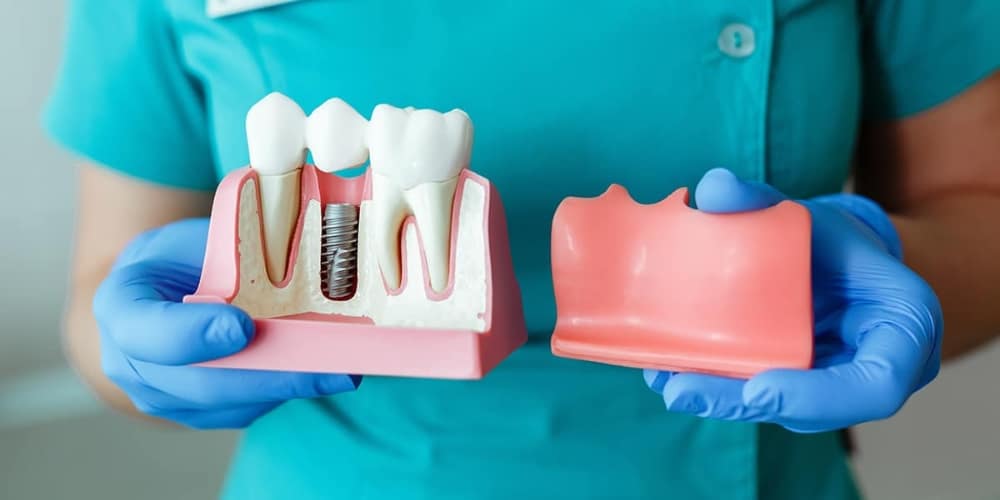When it comes to tooth replacement, dental implants have revolutionized the field of dentistry. They provide a permanent and natural-looking solution for those who have lost teeth for various reasons, such as decay, injury, or age. In this comprehensive guide, we will delve deep into dental implants, uncovering the science behind their success, their benefits, and the procedure involved. By the end of this journey, you’ll have a complete understanding of how dental implants work and why they are considered the gold standard in tooth replacement.
Understanding the Basics
What Are Dental Implants?
Dental implants are artificial tooth roots made of biocompatible materials, typically titanium. These implants are surgically placed in the jawbone as a sturdy foundation for replacement teeth. They mimic the function and appearance of natural teeth, making them a popular choice among patients seeking permanent solutions for tooth loss.
The Anatomy of Dental Implants
Dental implants consist of three essential components:
Implant: This is the titanium post that is inserted into the jawbone. It acts as a substitute for the natural tooth root.
Abutment: The abutment is a connector that joins the implant and the replacement tooth. It extends above the gum line, allowing the dental crown or bridge to be attached securely.
Crown or Bridge: The visible part of the dental implant, this is the custom-made tooth that resembles your natural teeth in shape and color. It is securely attached to the abutment.
The Science Behind Dental Implants
Osseointegration
Osseointegration is the biological bonding between the implant and the surrounding jawbone. It begins shortly after implant placement and may take several months to complete. During this period, bone cells grow and fuse with the implant’s surface. This process provides the implant unparalleled stability, making it a robust foundation for your new tooth.
Biocompatibility
Titanium, the material used for dental implants, is renowned for its biocompatibility. It’s not only strong and durable but also well-tolerated by the human body. This makes it the ideal choice for dental implants, as it minimizes the risk of rejection or allergic reactions.
Load Distribution
The implant’s ability to distribute the load while chewing is another aspect of the science behind dental implants. Like natural tooth roots, implants absorb the force generated during chewing, ensuring that the surrounding teeth and bone are not subjected to excessive stress. This contributes to maintaining the overall health of your oral cavity.
The Benefits of Dental Implants
Understanding how dental implants work is complete with knowing their numerous advantages. Here are some of the benefits that make them a top choice for tooth replacement:
Improved Aesthetics: Dental implants are designed to match your natural teeth seamlessly. They provide a lifelike appearance, allowing you to smile with confidence.
Longevity: Unlike other tooth replacement options, dental implants are built to last a lifetime with proper care and maintenance. This long-term solution eliminates the need for frequent replacements.
Enhanced Functionality: Implants function just like natural teeth, allowing you to eat, speak, and chew without any restrictions. You can enjoy your favorite foods and maintain a well-balanced diet.
Preservation of Bone Health: As mentioned earlier, dental implants stimulate bone growth through osseointegration. This helps maintain the density and strength of the jawbone, preventing the sunken appearance often associated with tooth loss.
Convenience: Dental implants do not require any special cleaning procedures or adhesives, unlike dentures. They integrate seamlessly into your daily oral hygiene routine.
Improved Self-Esteem: Restoring a full, natural-looking smile can boost your self-esteem and overall quality of life.
The Dental Implant Procedure
Now that we’ve explored the science and benefits of dental implants let’s take a closer look at the procedure involved:
Initial Consultation: The journey begins with a consultation with your dentist or oral surgeon. During this visit, your dental professional will assess your oral health, discuss your options, and create a customized treatment plan.
Implant Placement: The next step involves the surgical placement of the implant into the jawbone. This procedure is typically performed under local anesthesia, ensuring minimal discomfort. Afterward, a healing period is necessary to allow osseointegration to occur.
Abutment Placement: Once osseointegration is complete, a second minor surgery is performed to attach the abutment. This procedure is relatively quick and straightforward.
Crown or Bridge Attachment: Finally, the dental crown or bridge is securely attached to the abutment. The replacement tooth is custom-designed to match the natural teeth’ form and function.
Dental implants have transformed the way we approach tooth replacement. With their remarkable ability to mimic the natural tooth’s form and function, as well as the science of osseointegration, they have become the gold standard in dental restoration. The benefits they offer, from enhanced aesthetics to improved oral health, make them a wise choice for anyone seeking a permanent solution to tooth loss. If you’re considering dental implants, consult a trusted dental professional to discuss your options and create a personalized treatment plan. With dental implants, you can look forward to a brighter, more confident smile and the freedom to enjoy life to the fullest.




